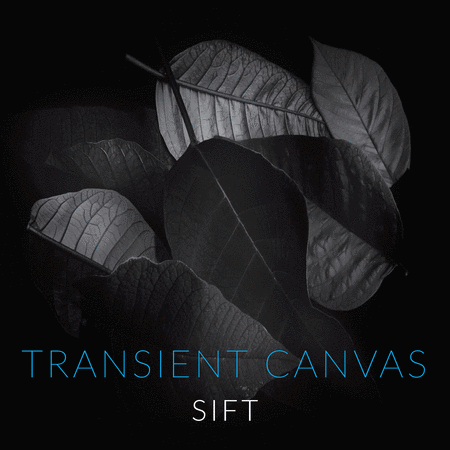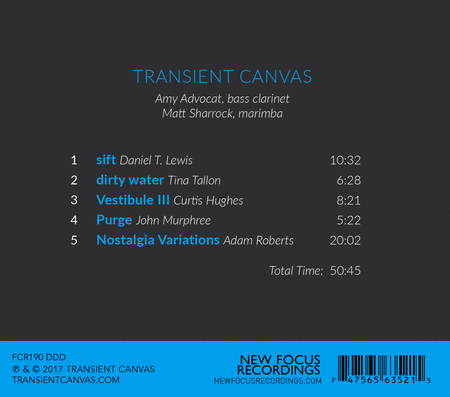Sift - Transient Canvas
Details
Description
SKU: NX.FCR190
By Amy Advocat, Matt Sharrock, and Transient Canvas. By Adam Roberts, Curtis Hughes: John Murphee, Daniel T. Lewis, and Tina Tallon. Classical. CD. Naxos #FCR190. Published by Naxos (NX.FCR190).UPC: 747565635215.
Duo repertoire is a fascinating exploration of the tension between monologue and dialogue, homogeneity and duality, and contrast versus hybridity. On their bold debut full length recording, the bass clarinet and marimba duo Transient Canvas present repertoire that explores the wide range of roles and textures these two instruments can assume with each other. Notably, the repertoire on this recording largely steers clear of the combination's most predictable texture - the marimba providing steady pulse oriented accompaniment to a soloistic bass clarinet. Instead, these works explore merged timbres, powerfully declamatory unison statements, and narrative structures to draw the listener into the colorful world of five substantial new works, all performed with a maturity beyond the years of these wonderful young performers. Daniel T. Lewis' sift, the title track, opens with ah aunting timbre. Each instrument intones in its low register, as beautifully revealed high overtones of the bass clarinet create a halo effect floating above. The work evolves patiently, as more pitches from the overtone series of the low fundamentals are explicitly articulated, and the bass clarinet begins to glide between the well tempered pitches of the marimba with gooey microtones. The bass clarinet takes a lead role in Tina Tallon's Dirty Water, framing blistering outbursts, plaintive wailing, and bravura rips with percussive punctuations. Midway through th epiece the dense activity gives way to haunting trills in both instruments before the insistent staccato punctuations signal a return to the denser, virtuosic material from the opening in a compressed coda. The raw energy of the attention grabbing opening of Curtis Hughes' Vestibule III leads quickly into more introspective material. The composer describes the work as a ''series of short, related duos that seem to exist in a state of perpetual transition between contrasting textural and stylistic worlds.''.


 Share
Share